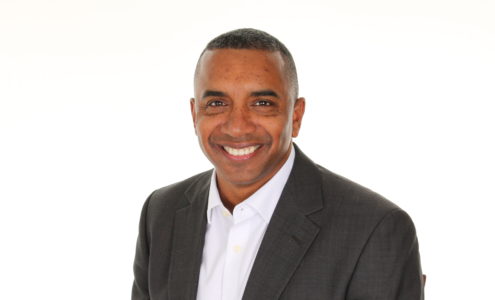ERM is one of the world’s leading sustainability consultancies. It has long published technical articles for its clients but has more recently adopted a structured thought leadership strategy. Freddie Hospedales, the Global Head of Marketing, tells The Professionals how it is helping change the culture of the firm as sustainability marches up the corporate agenda.
The sustainability agenda is broad, meaning different things to different people. It has for far too long been either an academic interest or put into the corporate social responsibility function.
Putting aside the summer headlines generated by student campaigner Greta Thunberg and Extinction Rebellion, the sustainability agenda is now firmly at the door the C-suite of the world’s largest businesses.
ERM is one of the world’s leading environmental and sustainability consulting firms with over 160 offices across 40 countries. Its clients often have the biggest impact on our planet in sectors including oil and gas, mining, power, manufacturing and technology.
“Sustainability and environmental considerations have for many years been seen as principally in the CSR space,” says Freddie Hospedales, the Global Head of Marketing at ERM, “but that is changing.”
“Over the last few years we have seen a step-change in ownership towards the C-suite, particularly the finance function and also the wider investment community. Stakeholders in the sustainability debate have broadened enormously.”
In 2017, ERM commissioned its first study on this – Bridging the Gap Between Sustainability and Finance – to explore this transition further.
“This study showed that sustainability is shifting from a compliance and policy led agenda to the boardroom and investor community,” says Freddie. “Investors want comfort that the risks to their investment from sustainability issues, such as climate change, are understood and being managed, and as a result, the C-suite is taking a much more active interest. And in tandem there is also the changes in consumer demand – a more discerning customer, also forcing change.”
“That was our first piece of thought leadership and it raised as many questions as it answered.”
In 2018 ERM decided to take this research one step further with a new piece of work to better understand where sustainability is heading.
“Three years ago sustainability was the 8th most important priority for company boards,” says Freddie. “Now it is much higher. We wanted to see who was involved, the levels of interest, and the perception of sustainability at the most senior levels.”
A cultural shift
“We have a wide range of experts in our organisation – what I call a lot of ‘ists’ – geologists, sociologists, economists, and climatologists, for example – and historically, much of our insights were technical briefings for technical roles in client organisations,” explains Freddie. “But as the sustainability debate has evolved, that does not work as well when speaking to higher levels in an organisation.”
“Our latest campaign uses a maturity curve, ultimately allowing an organisation to see where they sit against other businesses. Matched with a clear and strong opinion of what this means for a company, it can be a powerful tool, helping our specialists to engage with that wider audience. Maturity curves have long been used in academia,” explains Freddie, “so we wanted to create something feeling less technically led and more accessible to a broader business audience, which was reflected in the taxonomy we used.
A key part of ERM’s thought leadership strategy has also been a higher level of internal engagement, something Freddie says is often overlooked. “Understanding the sales culture of your organisation and reflecting that in your thought leadership planning is critical in securing engagement.”
“As one obvious example, for those that have them, involving your key account teams in thought leadership campaigns is critical – they are the ones, after all, having regular contact with key clients at multiple levels driving conversations and engagement.”
“Whilst this year’s campaign has only recently been launched, we will be tracking progress every three months with our key account managers.”
ERM’s thought leadership journey, whilst still in relative infancy, is a continuous process, always with an eye to where to go next.
“The research has opened up many different strands and avenues for us to explore,” says Freddie. “And whilst it is not always possible to plan for everything in a long-term thought leadership programme, it is important to have a strategy and for that strategy to embrace new leads and avenues.”
Freddie offers this advice to other professional services marketing professionals embarking or creating a thought leadership strategy:
- Be clear at the outset what you are trying to achieve at a strategic level with such a programme. Document this to avoid any ‘strategic drift’ at a later stage.
- Ensure there is an anchor stakeholder or champion – a senior partner to drive forward the programme or campaign at critical points from start to follow-up.
- Plan far ahead, these things always take longer than you think.
- Understand your firm’s own culture – firms that are inherently risk averse sometimes find it challenging to develop a clear and opinionated position.
- When possible plan ahead to manage the many ‘enthusiastic amateurs’ that like to get involved in such projects but can have a distracting and sometimes a damaging influence on the outcome.
- Have a clear strategy in place for internal engagement.
- And, of course, an external plan that works in harmony with the internal engagement.
- Make sure there is a balanced multi-channel promotional mix in place to maximise the opportunity.
- Have clear set of tangible metrics – but don’t overlook anecdotal evidence.


